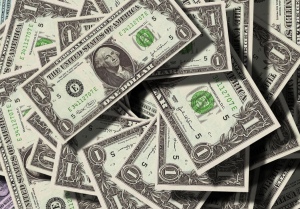Many of us were left sick after commercial property prices took a nose dive. Values have been lurching for years after the financial crisis of 2007, but is it time to get back on board now that we are seeing steady returns?
Commercial property used to be an investor favourite. That was of course before its fantastic boom and subsequent crash. Originally commercial property funds were set up as a way of bringing in an income. The savings rates from the banks were shocking, so we began to turn to commercial property as a way to make our money work harder. Some of us did incredibly well as capital values soared just before the crisis struck, but we got our fingers burned as we found out that buying a section of car-park wasn’t the same as buying shares in big liquid companies.
Until 2007, some of us were enjoying consistent double-digit returns annually from our commercial property funds. That prospect was so appealing that during 2006, at its very height, investors poured £3.6 billion into these funds.
But then the crunch hit and performance collapsed. British commercial property values dropped by more than 44% between 2007 and 2009. This was the steepest decline ever recorded.
But finally, after a long dip, the economic backdrop is improving and commercial property is back among the top selling investments. The Investment Management Association stated that investors spent £1.5 billion on commercial property funds in 2013. This was a 136% increase on the £423 million.
The Head of investment research at the brokers, The Share Centre recently said, ‘In the years running up to its collapse, commercial property was all about capital growth but traditionally, it has been an alternative yield source for investors, a state which it has essentially returned to. While I do not expect any big capital uplift there are a number of funds delivering a decent income to investors’.
The last 12 months have shown a steady return on commercial property investment. It’s not set the world on fire, but past experience ought to teach us that that’s probably a good thing. What goes up must come down. We only saw a 2% average total return last year, but gains over a five year period look much more attractive at 76%. The director of research at Legal & General Property says that there are many factors boosting the market currently – attractive valuations, credit conditions and dramatically improving occupier demand to name a few. Rob Martin says ‘Construction of new commercial buildings over the past few years has been very low and the balance of demand and supply is improving, reflected in increasing rents’.
London has now recovered most of the value it lost after the financial crisis. Because of this some people are suggesting that to gain the greatest possibility for a large recovery you need to look outside of the capital. Ian McBryde, the F&C fund manager says, ‘Sentiment towards UK commercial property is becoming increasingly positive. Yields have moved inwards and although prime property remains in favour, there are signs that investors are starting to look more closely at opportunities in the regions and for ‘good secondary’ stock’. As an example, you’re looking at about £500,000 for 2000 square feet of commercial property in London. And the value is not expected to increase by much since the market has basically recovered in this area. Whereas commercial property for sale in Suffolk will cost you half that amount for the same square footage and the value looks likely to rise over the next few years. So at this time that’s looking like the better investment.
So where is best to invest? You can either look to get a mortgage on an individual property and then rent it out, or use it yourself and look for the return on sale in the future. Or you can pay into a property fund. There are two kinds. Those that directly invest in buildings and those that invest in shares of groups in the property sector, like hotel chains and developers. These are called Real Estate Investment Trusts (REITS) and they offer the potential for a higher return but at a greater risk.









